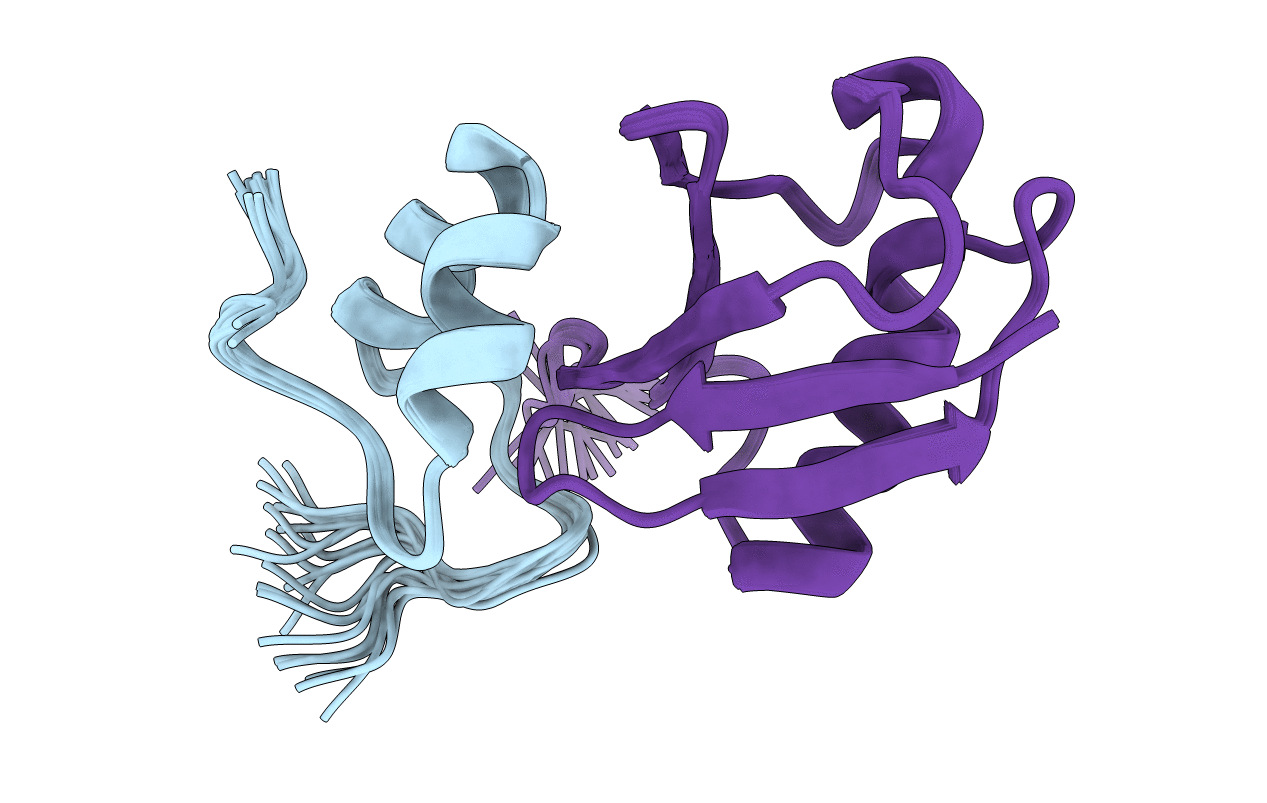
Deposition Date
2013-07-29
Release Date
2014-06-04
Last Version Date
2024-05-15
Entry Detail
PDB ID:
2MBB
Keywords:
Title:
Solution Structure of the human Polymerase iota UBM1-Ubiquitin Complex
Biological Source:
Source Organism:
Streptococcus sp. 'group G', Homo sapiens (Taxon ID: 1320,9606)
Homo sapiens (Taxon ID: 9606)
Homo sapiens (Taxon ID: 9606)
Host Organism:
Method Details:
Experimental Method:
Conformers Calculated:
200
Conformers Submitted:
20
Selection Criteria:
structures with the lowest energy


